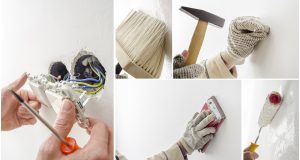As indoor air quality becomes increasingly recognized as a critical factor in maintaining public health and well-being, there is a growing need for policies and initiatives that promote clean and healthy indoor environments. Comfort Tech Duct cleaning services plays a crucial role in improving indoor air quality by removing contaminants and ensuring the efficient operation of HVAC systems. This policy bridge outlines recommendations for policymakers to support and promote comprehensive duct cleaning initiatives.
Problem Statement:
Indoor air pollution poses significant health risks, including respiratory ailments, allergies, and asthma, affecting millions of people worldwide. Contaminants such as dust, mold, pet dander, and volatile organic compounds (VOCs) can accumulate in HVAC ductwork, compromising indoor air quality and exacerbating health issues.
Recommendations:
Regulatory Standards:
Policymakers should establish and enforce regulatory standards for duct cleaning practices to ensure compliance with industry best practices and guidelines. This includes requirements for certified technicians, equipment standards, and quality assurance protocols. Additionally, periodic inspections and audits can be conducted to monitor compliance and address any violations promptly.
Public Awareness Campaigns:
Governments should launch comprehensive public awareness campaigns to educate homeowners, building managers, and occupants about the importance of duct cleaning and its impact on indoor air quality. These campaigns should utilize multiple communication channels, including television, radio, social media, and educational materials distributed through community centers, schools, and healthcare facilities. Messaging should emphasize the health benefits of clean air, common pollutants found in ductwork, and the importance of regular maintenance to prevent health problems.

Incentive Programs:
Governments can implement incentive programs to incentivize homeowners and building managers to invest in duct cleaning services. This may include tax incentives, rebates, or subsidies for duct cleaning expenses, particularly for low-income households and high-risk populations. Additionally, partnerships with financial institutions and insurance companies can be explored to offer financing options or discounts for duct cleaning services as part of home improvement or health insurance packages.
Training and Certification Programs:
Policymakers should support training and certification programs for duct cleaning technicians to ensure that they possess the necessary skills and expertise to perform thorough and effective cleaning services. This includes training on equipment operation, safety protocols, customer service, and compliance with regulatory standards. Government funding can be allocated to vocational schools, community colleges, and industry associations to develop and administer training programs, with a focus on promoting diversity and inclusion in the duct cleaning workforce.
Conclusion:
Comprehensive Comfort Tech duct cleaning plays a vital role in enhancing indoor air quality and promoting public health and well-being. By implementing regulatory standards, raising public awareness, offering incentives, investing in training programs, and fostering collaboration with industry stakeholders, policymakers can support and promote the adoption of duct cleaning initiatives, ensuring cleaner and healthier indoor environments for all.



